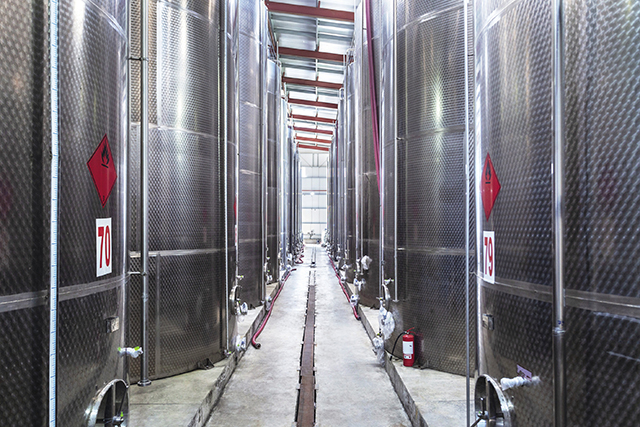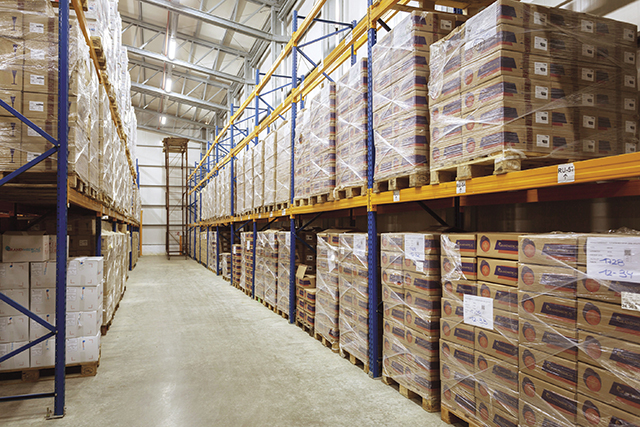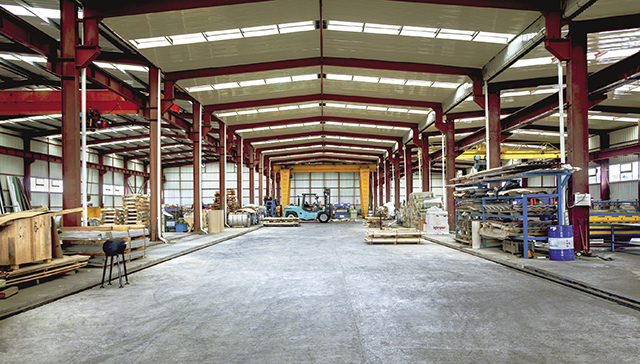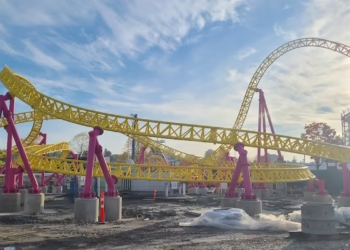Poti is a city of strategic importance both in the region and internationally. The port of Poti is one of the fundamental crossroads between Asia and Europe. The territory of Poti Free Industrial Zone directly borders Poti Port, putting it in a strategic location in the region. The city is also an important asset for the economy, and its successful operation is among the principal tasks of the country.
The attractive geographical location of the city of Poti offers a real possibility for the creation of a transit hub for the country. The Poti FIZ team is working hard to overcome all related challenges, step-by-step achieving each goal in order to implement large-scale plans.
We spoke to Davit Ebralidze, Director General of the Poti Free Industrial Zone, about projects implemented or planned, the main achievements of Poti FIZ activities, the latest news and, in general, the importance of its existence for the country.

There are many industrial zones in the world, almost half of which come from China. What kind of practices do you share with Asia?
China’s economic zones are recognized worldwide as the reason for the success of China’s economic reforms, which have fundamentally changed China’s market economy. On the one hand, investors were given the opportunity to grow their business in the face of low government control, low taxes, and free market conditions. On the other hand, foreign investment has driven the development of China’s urban, economic, financial, and infrastructure projects.
A memorandum was signed with the Government of Georgia on the expansion of the Silk Road initiatives, which aims to develop bilateral economic and trade relations for trade, investment and production opportunities. We were directly involved in the signing process of this document, in the framework of which Georgia hosted the Belt and Road Forum.
The Georgia-China Free Trade Agreement is an additional incentive for the development of bilateral economic, trade and manufacturing businesses between the two countries.
The development of the new Silk Road initiative, which envisages connecting three continents, Asia, Africa and Europe, will unconditionally lead to the sharing of many years of Chinese and Asian experience, which is reflected in the establishment of links between local producers and medium and large multinational corporations, diversification of production, and attracting foreign direct investment, for the implementation of which the Poti Free Industrial Zone has all the levers to become one of the leading connecting links in this chain.

What makes Poti FIZ a strong source of investment?
This question sounds simple enough to answer, but requires complex analysis and depends on a number of interrelated factors.
The strategic location of Poti FIZ, which is reflected in its proximity to the port of Poti, direct access to international rail and land highways, as well as the location of the corridor connecting the ancient Silk Road, gives Poti FIZ a special advantage as a hub connecting international trade corridors and facilitating the rapid movement of cargo in the region.
With the tax incentives granted to Poti FIZ, the companies registered in the FIZ successfully carry out trade-production business, including import / re-export / export procedures; Companies in Poti FIZ produce and assemble various types of products, which are delivered to Georgia, the CIS region and international markets.
Manufacturing companies benefit from free trade agreements between Georgia and various countries, which allow them to obtain preferential certificates of Georgian origin for products produced in Poti FIZ for various markets, including EURO1 and ST1.
The developed-by-us “Single Window” principle of our service, which combines fast registration and licensing of the company by business sector, continuous customs services, the opportunity of obtaining certificates of origin on the spot, issuance of construction permits in the shortest possible time, simplifies the process without any bureaucracy.

Which strategic development principles have you chosen since you took on your position, and what kind of adjustments have you had to make?
When we entered the management of Poti FIZ, we met a team of professionals with many years of experience, with whom we developed an action plan for the development of the FIZ in the shortest possible time. It focuses on maximizing business production and management for investors, introducing new infrastructure and technology products, and creating more investment offers. We have the ambition to turn Poti FIZ into a regional and international trade and production hub.
We have completed the digitization process and fully switched to a digital management ecosystem. We have also digitized the investor database and created individual cabinets through which the FIZ can manage the database created for the it.
What pandemic-related challenges is the Poti FIZ face and how is it overcoming them?
For us, as the administrators of Poti FIZ, the main concern is to ensure the smooth operation of the FIZ work process.
Following the outbreak of the pandemic, Poti FIZ was directly faced with major challenges and constraints, such as moving to a crisis management plan as soon as possible and taking care of each FIZ company to enable the movement and processing of cargo in the shortest possible time.
We have faced the same great challenge facing the world as a whole, and we have been able to successfully operate FIZ continuously as a result of coordinated cooperation with Poti FIZ Customs and other government agencies.
Many companies, including us, have had to adapt to new realities and set new agendas. As part of the Crisis Action Plan, we developed special investment proposals that have allowed us to open a hazelnut processing plant and textile factory during the pandemic. We have also ensured the continuous operation of all FIZ enterprises.
Success is largely based on the team. Tell us about them.
The professionalism of our team, the progressive vision, the constant pursuit of development, gives us the opportunity to accept and respond to all challenges. We unite around one main idea, which is to create a world-class developed, successful trade and production hub in the Poti Free Industrial Zone. To achieve this, the FIZ team has all the intellectual resources and experience.
Which current and future projects are you supervising?
Today, there are about 100 enterprises operating in Poti FIZ, most of which are engaged in trade, import of various products, warehousing and export / re-export.
Despite the pandemic and new challenges, we have successfully completed negotiations with several manufacturing companies. The hazelnut processing plant continues the working process, creating Georgian products and exporting to the CIS countries. It is noteworthy that during the pandemic, the factory did not stop operating and continued the full process of hazelnut processing in accordance with the recommendations of the Ministry of Health. The plant currently employs about 20 locals, whose number will increase as cargo turnover in the region improves.
Also, in 2020, the process of arranging a production building and installing machinery was completed by a company that manufactures microchips, which is a good message for other manufacturers to start to develop high-tech products in Georgia. Unfortunately, due to the pandemic, staff training was delayed; however, a visit by foreign specialists is planned, who will ensure the start of the full production process quickly.
In May 2021, the factory for the production of sports masks “Fargin” was officially opened in Poti FIZ, which, despite the pandemic, was able to fully conduct the production process, provide appropriate machinery, find local staff and train them.
The company sews masks for use under karting helmets, which will be exported to EU countries as Georgian products. Up to one million GEL was invested in the textile factory, with Polish investment, and 25 local people were employed.
Large-scale construction of a textile factory is currently underway in the FIZ, where it is planned to employ up to 600 local people.
Despite the current challenges, we have successfully completed negotiations on the opening of a logistics terminal for copper and non-ferrous metal concentrates, the construction of which will begin in the near future.
By the end of the year, the construction process of the auto parts component factory, which was delayed due to the pandemic, will be resumed. The factory will employ about 150 locals.
We are actively negotiating the relocation of the refrigerated wagon factory to FIZ, which will employ up to 400 locals.
We are also in active negotiations with major textile and pharmaceutical companies, and we hope to be able to announce the construction of new projects this year.
How should Georgia, as a transit hub, become a stronger base on the world map?
Georgia is unequivocally a transit corridor and one of the main locations in the world transport supply chain. However, sustainable infrastructural development, construction of a new deep-water port, and increase of flights are a necessary precondition for establishing an international transit and logistics hub.
The logistics sector today faces many challenges, among them low quality of service, outdated logistics infrastructure and equipment, and an inefficient supply chain management. Unfortunately, this is an incomplete list of problems in the field of transport and logistics.
However, as a result of economic and infrastructural reforms carried out in recent years, the transport and logistics sector in Georgia has developed significantly. As a result of infrastructure modernization, simplification of customs procedures and liberalization of services in key sectors of the economy, the country’s transit and logistics potential has been enhanced, ensuring better international connectivity with global markets.
Georgia is currently upgrading and expanding its transport infrastructure, new rail routes, and international airports. It is through the development of such infrastructure projects that Georgia will be able to make the most of its transport and logistics potential.














